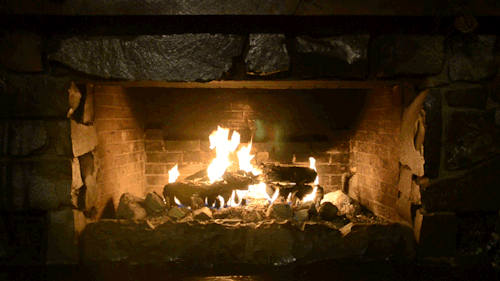
We are one leaf on the great human tree.
Pablo Neruda
Putting our mark on the world
It is human nature to want to make a difference. A key question to ask ourselves is “what difference am I making?
We are each continuously making a difference. We do so with each action and by each inaction;
- by what we say and by our silence;
- by our presence and by our absence;
- by our kindness and by our cruelty;
- by our passion and by our indifference.
What is your definition of “making a difference”?
The difference we make influences our own lives, the lives of those around us, the life of our community, and our nation.
Making a difference in your own life
Every day involves a multitude of choices about your personal life. When you make healthy choices about what you eat and drink, you nourish your physical being. When you get enough rest, you enhance your body’s restorative powers.
When you socialize with supportive like-minded people, you experience the gifts of friendship. When you read or take a course, your brain gets exercised.
When you take a pause from the noise of the electronic world. When you sit quietly beside a brook in silence, hearing your voice of reason and the song that your heart sings, you are making a difference to your inner life.
Every time you confront your fears. Every time you accept your own humanness. Every time you forgive yourself or someone who you feel violated you. You are making a difference.
Every time you choose words wisely rather than using uncensored insensitive language. You are making a difference in your life and in the lives of others.
What are the differences that you are making to your personal life?
Making a difference in the life of others
As an individual you influence others daily. Every time you listen to a friend, provide guidance to a child, encourage your spouse. Every time you confront your partner, are present for a floundering teenager, bring a casserole to a neighbor. Every time you respect the speed limit, you reach out to an estranged member of the family, sit in silence with a grieving person. You are making a remarkable difference.
When you surprise someone with a visit, send a card, or lighten a neighbor’s load, someone’s life is positively influenced.
You are making a difference when you realize you are not the center of the universe. That your pain, however deep, is a shared pain.
A pain shared by every parent who has lost a child. Every spouse who has had to say a premature goodbye. Every athlete who whose body could not achieve what her mind could imagine.
Every entrepreneur whose dream evaporated for reasons outside of their control. Every home owner who has faced foreclosure. Every elder who is aging alone. Every street person who could never have envisioned a life of shame.
When you strive to understand someone else’s pain or viewpoint, you are building a bridge to mutual understanding.
What are the differences that you are making to the life of others?
Making a difference in your community/nation
When you rise in the morning and are interested in making the world a better place, you are making a difference.
When you donate blood, learn CPR (cardiopulmonary resuscitation), carry safety equipment when travelling, keep your vehicle in good repair, you are making a difference to the larger community.
When you participate in political life by voting, raise funds for a worthy charity, write your political representative, constructively share you views, you are influencing the larger community. When you rally to assist in local, regional, national or international crises, you are making a difference in the world.
When you work collectively with others, your influence is often magnified. Think about the collective efforts that have touched your life. The Red Cross, the many groups responding to specific illness, amateur theatre groups. The list is endless.
The Famous Five changed the destiny of women in Canada. Five Alberta women worked relentlessly to have women in Canada legally designated as “persons”. Previous to the 1929 Persons’ Case, women were not people in the eyes of the law.
What are the differences that you are making to the greater community?
A single candle can bring light to a cave.
Avoiding evaluation of your contributions
Just as it is human nature to want to make a difference, it is human nature to want to judge whether we have met the mark. There is a temptation to be judge and jury of our own well intentioned deeds.
Not every action leads to the intended outcome. Sometimes a seemingly insignificant action has considerable influence. At other times, a well-planned intervention executed with precision falls short of the anticipated results.
It is possible to overstate our influence, but more often we minimize the difference that we are making. It is common for people to say, “All I did was listen.” Listening actually makes a huge difference. Given an opportunity to be heard, people often resolve their own concerns. Being heard is sometimes the first step for them to make a difference in their own lives.
Change takes place on its own schedule. We may see immediate differences we individually or collectively made. On the other hand, the seeds of change may take time to mature.
A First Nations woman being interviewed about her work with recently released female inmates convincingly asserted, “I don’t concern myself with making a difference. I see hope as a chain. It is only important that I am not the link that breaks the chain”.
All of us make a difference. There are times when we diminish our sense of contribution by comparing ourselves to individuals who we feel made a significant difference in a single event. Heroic actions catch our attention because of the dramatic way in which they illustrate the difference one person can make.
Desmond Doss, the character portrayed in the film Hacksaw Ridge, who enlisted as a medic while refusing to carry a gun, was singlehandedly responsible for rescuing 75 men from one of the bloodiest battles of WW11.
Harriet Tubman, once escaping from slavery to Canada, risked her life to free at least 45 other black men and women from the US. The underground railway she forged made life altering differences in each of those lives.
Sometimes, one single event has a huge sphere of influence. More often though, the difference is made in a series of cumulative events. Maurice Hilleman, who has been credited with developing over 40 vaccines, could not have known that when he went to his lab each morning for years that he eventually would save more lives than any other medical scientist of the 20th century.
People like Nelson Mandala, Desmond Tutu, the Dali Lama, Mother Teresa, Winston Churchill, Abraham Lincoln and Albert Einstein, now household names, lived a lifetime of personal devotion within the a committed community. The energy of many individual contributors were what made their outstanding outcomes possible.
No one makes a difference alone but it often starts with one person, a person committed a vision of change.
What is your style?
Kindness
Words can work magic, and words can deliver harm. Words can condemn or redeem. The choice of words is ours to make. A kind word can inspire. A kind word can encourage. A kind word can heal. You cannot actually measure the ripple effect of a generous gesture. Generosity and kindness are infectious. Often the sphere of influence of one act travels beneficially outward but the resulting improved outcomes go unmeasured.
Advocacy
Taking action on behalf of a cause or a person makes a difference. When you accompany someone to their medical appointment, lobby for policy that furthers a senior housing project, take a stand on climate change, you make a difference.
Young Greta Thunberg, the Swedish teenage climate change activist, is a striking example of the fact that making a difference is not limited by our age, old or young.
Amnesty International is an example of individuals acting collectively while making a magnified difference. Seven million people in over 150 countries are working together to protect and promote human rights.
Service
Kindness and advocacy are forms of service. Service takes many forms. When you use your time to serve on a Board of a worthy organization or serve food in a soup kitchen, you make a difference. When you are a scout leader, a hockey coach, or a volunteer firefighter, you are serving your community.
How can writing make a difference?
Mary Pipher claims that writers can inspire a more kind, more fair, more beautiful world. Alternatively writers can incite selfishness, stereotyping and violence. Writers can unite people or divide them.
In her book, Writing to Change the World Mary refers to the many ways that we can make a positive difference with written words. Furthermore, she suggests how we can maximize that difference.
Any form of writing can change the world. No genre is excluded. Whether your form is poetry, essay, story, dialogue, letter, blog or song, you can use your talents in the service of what you consider to be important goals.
Research
Writing a simple thank you note makes a difference , a study providing evidence of the benefits to both the originator and the receiver of the thank you note.
Readings
Words are the most powerful tools at our disposal. With them, writers have saved lives and taken them, brought justice and confounded it, started wars and ended them. Writers can change the way we think and transform our definitions of right and wrong.
In Writing to Change the World, Martha Pipher reveals the power of words. As a writer and therapist, she uses “rousing commentary, personal anecdotes, memorable quotations, and stories of writers who have helped reshape society”. This book may inspire you to use the written word to change the world.
Enjoy these three short videos below that demonstrate the power of one can make a difference.
1) The starfish story.
2) A kindness video
3) A Ukrainian youth choir singing “You raise me up”.
Strategy of the month
Refer to letter writing strategy published in April of 2021, link below.
What do you feel strongly about?
Craft a letter to the editor on a subject about which you have an opinion .
Not confident? This letter to the editor guide will help you. Decide later whether you will send the letter. Just practice. Whether or not you send your letter, your will have clarified your own views.
Photo reflection of the month

The effect of one good hearted person is incalculable
Oscar Arias
Write a thank you letter to someone who has made a difference in your life. Detail what they did and how it has affected you. It could be a colleague, a friend, a teacher. Whoever they are, they left a footprint on your heart. Tell them how grateful you are that there are people like them creating simple life changing inspirations with no expectations of being rewarded. Let them know. Then, send it to them with no expectation of a reply
























